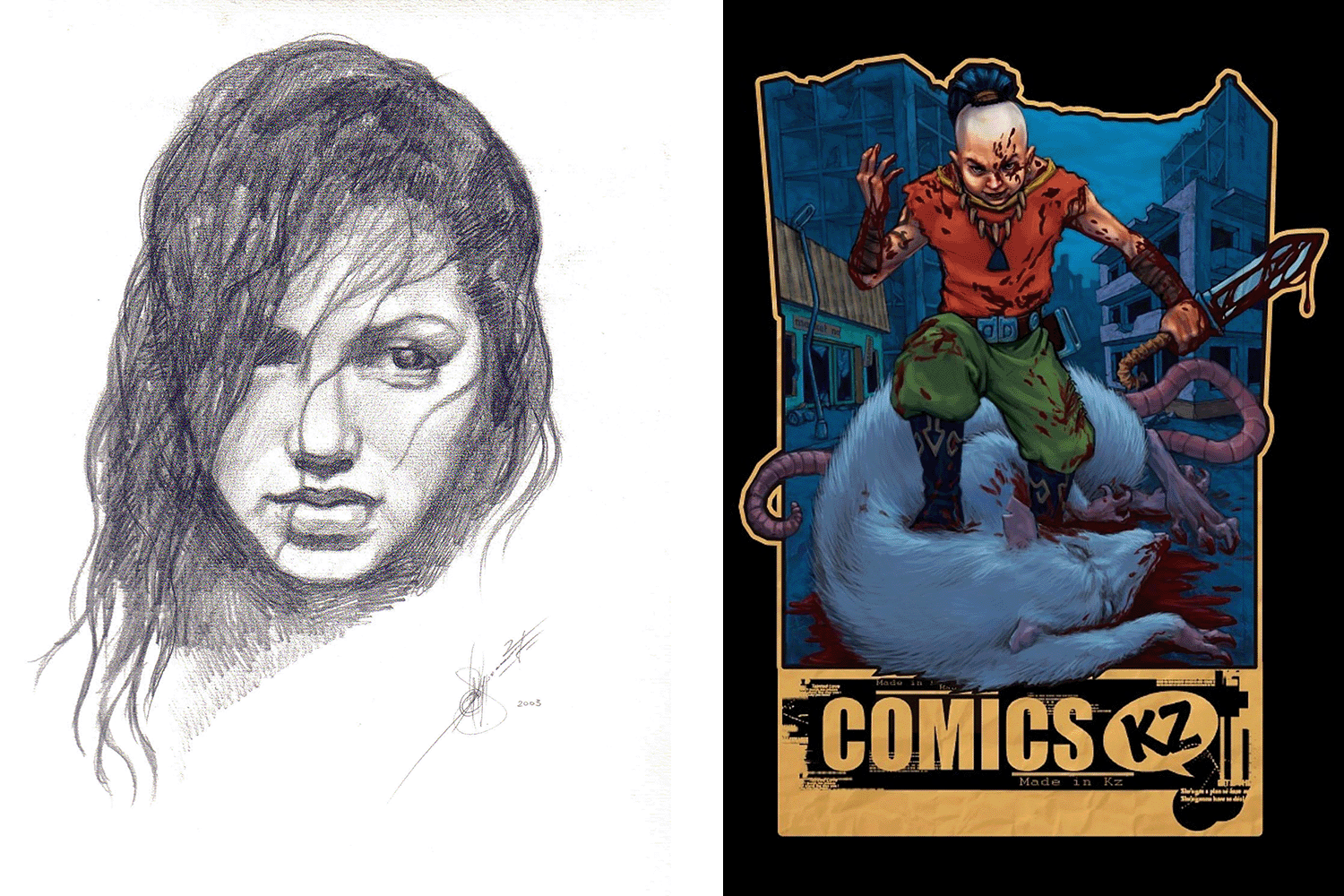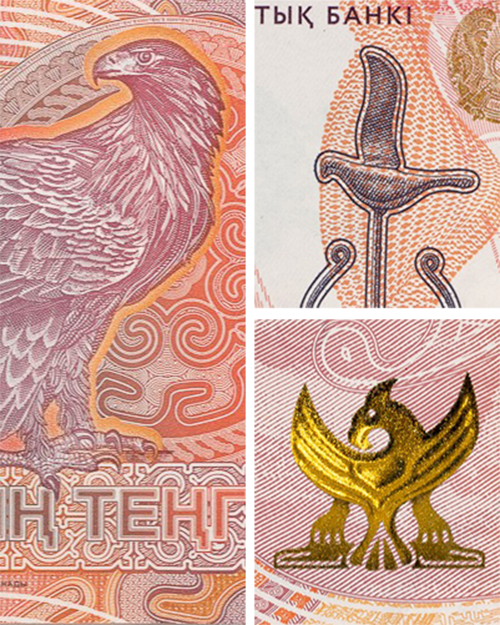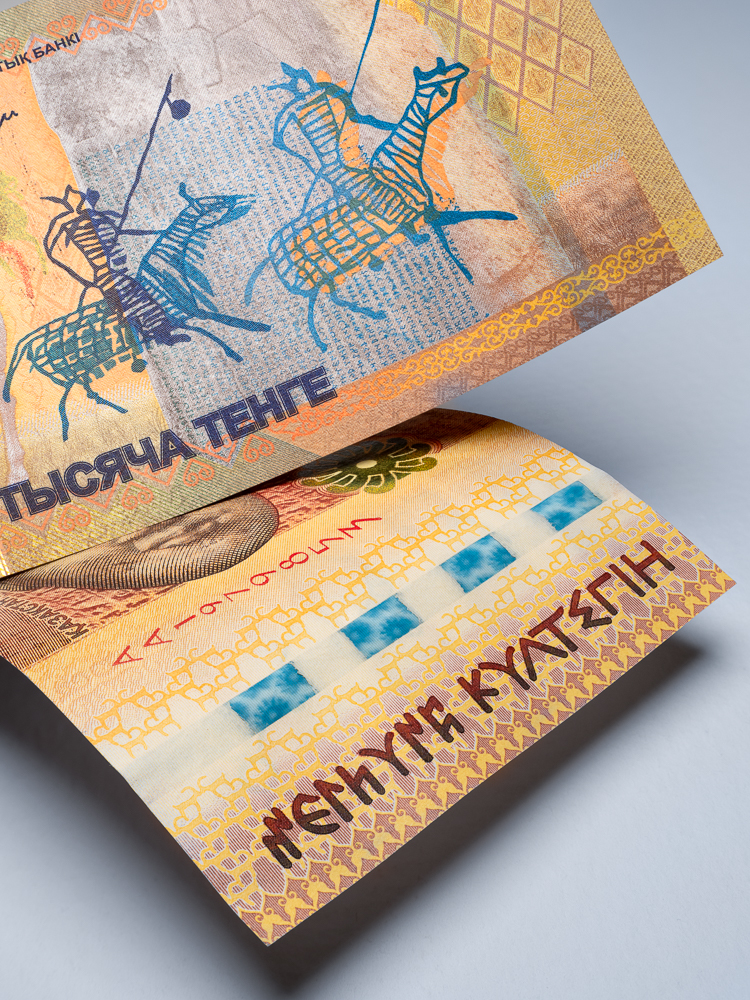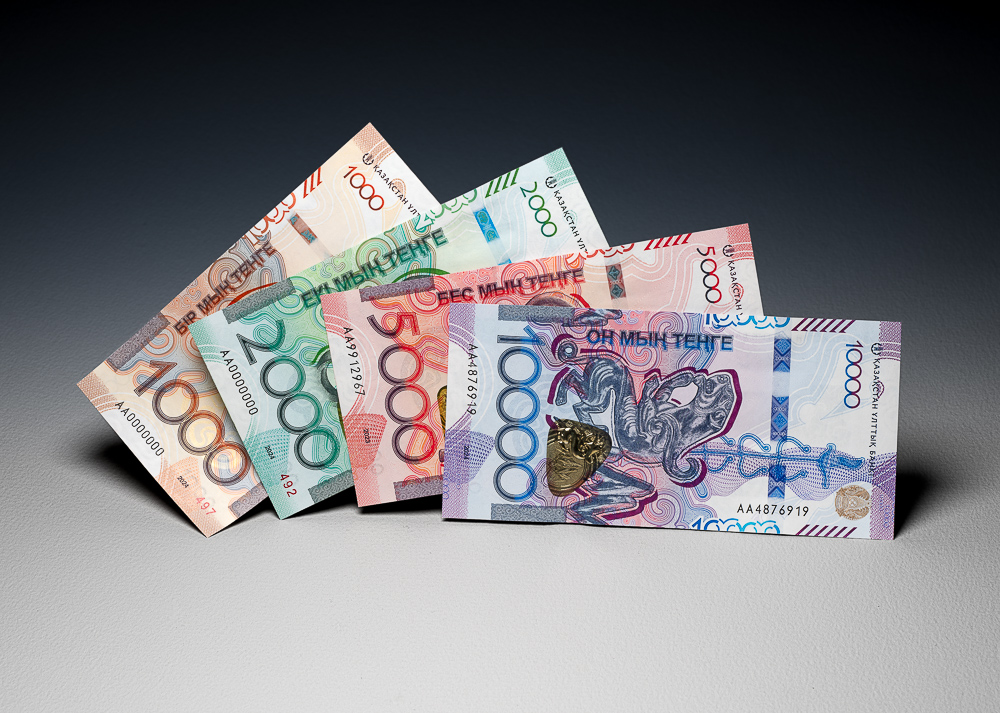Insights Banknotes
Designing the Future of Kazakhstan’s Tenge
An Interview with Chief Designer Sanzhar Nurkassimov
The National Bank of Kazakhstan has unveiled a new generation of banknotes – the “Saka Style” series – where tradition and innovation meet. To understand the artistic vision and cultural depth behind this work, we turn to the Chief Designer, Mr. Sanzhar Nurkassimov. With his unique background in art and illustration, and his leading role in shaping the nation’s currency, he is the one best placed to explain how art, history, and cutting-edge security features come together in a series that not only protects the economy but also tells the story of a nation.

For Kazakhstan, banknotes are more than currency. They are a showcase of identity, heritage, and technological progress. In recent years, the National Bank has made headlines with bold design choices and pioneering use of security features – such as Crane’s micro-optics, including the world’s first multicolored RAPID® Vision thread. Each innovation reflects both a commitment to fighting counterfeiting and a desire to position Kazakhstan as a forward-looking nation, ready for international investment.
The new “Saka Style” series builds on this legacy. Inspired by the ancient nomadic Saka culture and its symbols, the banknotes connect modern Kazakhstan to its deep roots in the steppe. The country’s approach is holistic: cultural continuity, artistic excellence, and state-of-the-art technology all play their part.
In this interview, Chief Designer Sanzhar Nurkassimov shares his personal journey and the vision behind the new series.
When did you get interested in design and illustration?
You could say art is in my blood. I come from a family of artists: my great-grandfather was a blacksmith and jeweler, my grandfather was an engineer, my father is a monumental artist and interior designer who also taught for many years at the T. Zhurgenov Academy of Arts, and my mother studied film directing in her youth. Growing up, I was surrounded by creativity and received a classical art education. I graduated from Almaty Art School and the Republican Art College, majoring in advertising design, then went on to study illustration and multimedia animation at the Istituto Europeo di Design in Rome.

How do you apply your illustration skills to your design work?
Illustration goes beyond book design. In a broader sense, it's visual storytelling an - interpretation of events or stories that the illustrator has experienced or read about. Illustration is a narrative told through imagery, a way of communicating with the audience.
Banknotes are essentially illustrations too, mass-produced and distributed nationwide, but with numerous technical constraints. Despite all their security features to prevent counterfeiting, banknotes must remain clear and easy to understand.
What are the roots of Saka culture? How is it seen today?
Saka culture is part of Kazakhstan's ancient history. The Sakas were among the first nomadic tribes, living 2,500-3,000 years ago. Based on artifacts found during excavations of burial mounds in Kazakhstan, their culture became a predecessor to Hun culture, and later to early Turkic culture, which continued through the periods of the Golden Horde and found direct reflection in Kazakh culture. Everywhere we can see parallels that show continuity and the preservation of ancient nomadic traditions.

For example, during excavations led by renowned archaeologist Zainolla Samashev, remains of two golden eagles were found in a Saka-period burial in western Kazakhstan, alongside their noble owner a tribal leader. Bone analysis showed that these were adult specimens used for hunting. This tradition “berkutchi”, hunting with golden eagles still exists among Kazakhs today. The special status of the eagle is also reflected in Kazakhstan's flag, where a soaring golden eagle is set against an eternally blue sky.
Even today, kumys – the traditional drink made from fermented mare’s milk – remains popular, just as it was 5,000 years ago during the Botai culture, when horses were first domesticated in Kazakhstan. We could also talk at length about the unique “animal style” of ornamentation that decorated weapons, clothing, and household items, and how it transformed into Kazakh traditional patterns that still endure.
Can you describe the three pillars behind the new banknote design – connection to the steppe, artistic legacy, and national continuity?
The steppe is an endless expanse, and nomadic life was defined by mobility and adaptation. Nomads followed the pastures through the seasons. This is our heritage, and we're proud to be descendants of these great nomads.
Ancient artifacts and everyday objects reveal our ancestors' beliefs. They show incredible practicality while being rich in symbolism that has shaped our identity for thousands of years and continues to influence our traditions today.
Our new "Saka Style" tenge banknote series emphasizes these values. It's both a reminder and a call to honor history and live in harmony with nature, as our ancestors did. The tenge also serves as our country's ambassador to the world. As a young nation with 30 years of independence, we believe it's vital to keep sharing Kazakhstan's culture, nature, and history with the global community.
Is being first part of the Bank's banknote technology strategy? And is it also a reflection of the national goal to continue building a future-ready and investor friendly economy in Kazakhstan?
Of course, we aim to stay current with technology, since it constantly evolves – what was cutting-edge ten years ago is obsolete today. But this doesn't mean the National Bank of Kazakhstan rushes to adopt every new technology. Our approach to security features focuses not only on security and anti-counterfeiting features but also on practicality and long-term viability.

Let me give you some examples. In 2008, Kazakhstan pioneered the use of SICPA's Spark® element on a commemorative project – and it paid off. Today, virtually every country uses this feature on their banknotes. The element is now in its third generation, and our Kazakhstan Banknote Factory can apply the latest version.
In 2013, we released the Kultegin commemorative note honoring Turkic runic script, featuring Crane's micro-optic thread almost simultaneously with its debut on US hundred-dollar bills.
Starting in 2023, we became the first to use the dual-colored RAPID® Vision thread on our new Saka Style series, recognizing this technology's tremendous potential.
We also released a commemorative 1000 tenge banknote this year honoring the 80th anniversary of the Great Victory, our first use of Crane's 18mm wide MOTION SURFACE® micro-optic stripe.
Looking ahead – what do you want to work on once the commemorative note and the full series are in circulation?
My role as a banknote designer goes far beyond just creating designs for new series or commemorative notes. As you know, developing banknotes is incredibly complex – from initial research and concept sketches to design approval, technical specifications, functional design, supplier coordination, and production. The process can span several years, and I'm involved at every stage until launch and circulation.
I'm constantly studying the market, tracking industry trends, and looking for fresh ideas and solutions. I approach the future with tremendous excitement and enthusiasm – every new project brings fresh opportunities for creativity and innovation.
